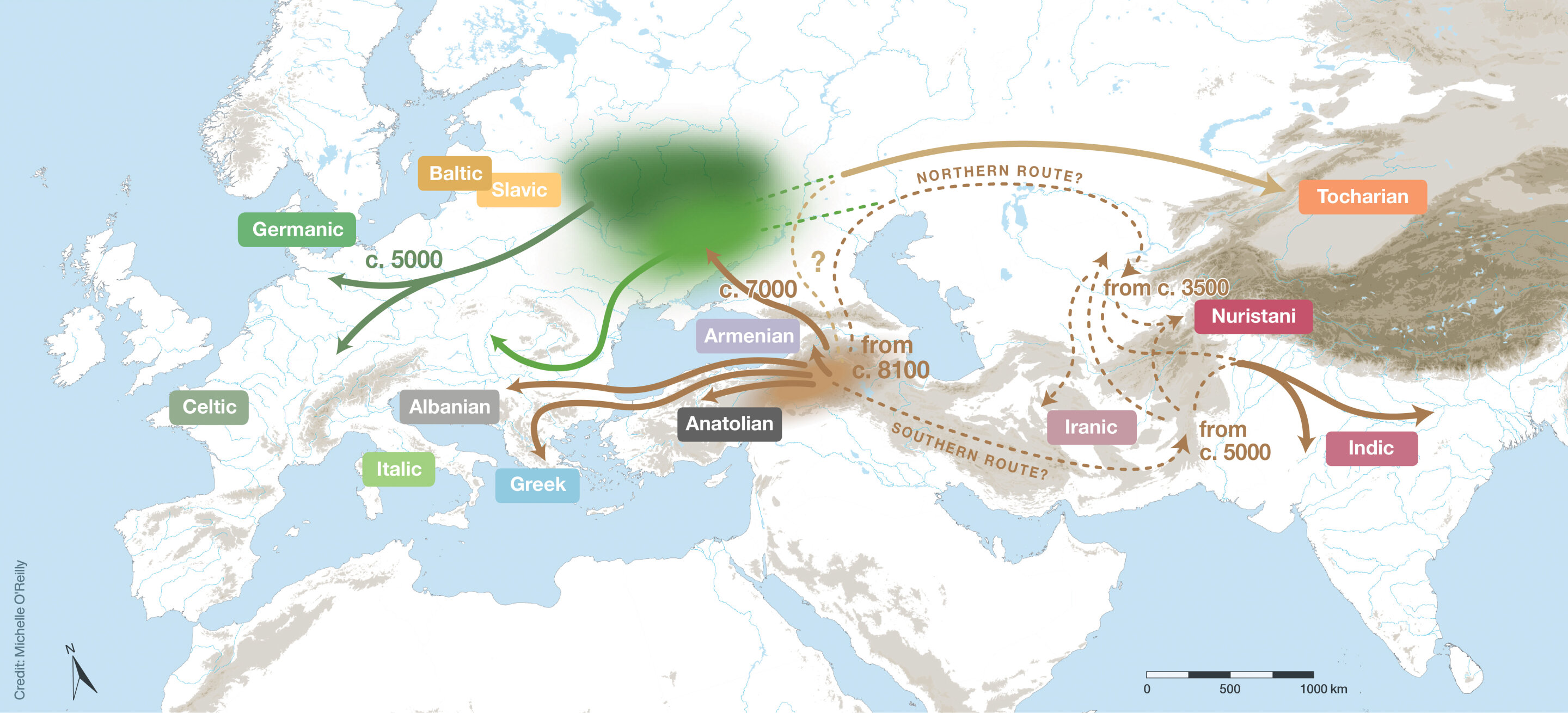An international team of linguists and geneticists led by researchers from the Max Planck Institute for Evolutionary Anthropology in Leipzig has achieved a significant breakthrough in our understanding of the origins of Indo-European, a family of languages spoken by nearly half of the world’s population. The work is published in the journal Science.
For over two hundred years, the origin of the Indo-European languages has been disputed. Two main theories have recently dominated this debate: the ”Steppe” hypothesis, which proposes an origin in the Pontic-Caspian Steppe around 6,000 years ago, and the “Anatolian” or “farming” hypothesis, suggesting an older origin tied to early agriculture around 9,000 years ago.
Previous phylogenetic analyses of Indo-European languages have come to conflicting conclusions about the age of the family, due to the combined effects of inaccuracies and inconsistencies in the datasets they used and limitations in the way that indo-european-languages.html” title=”Unveiling Fresh Perspectives on the Origins of Indo-European Languages”>phylogenetic methods analyzed ancient languages.
To solve these problems, researchers from the Department of Linguistic and Cultural Evolution at the Max Planck Institute for Evolutionary Anthropology assembled an international team of over 80 language specialists to construct a new dataset of core vocabulary from 161 Indo-European languages, including 52 ancient or historical languages. This more comprehensive and balanced sampling, combined with rigorous protocols for coding lexical data, rectified the problems in the datasets used by previous studies.
The team used recently developed ancestry-enabled Bayesian phylogenetic analysis to test whether ancient written languages, such as Classical Latin and Vedic Sanskrit, were the direct ancestors of modern Romance and Indic languages, respectively.
2023-07-27 21:24:02
Post from phys.org


















